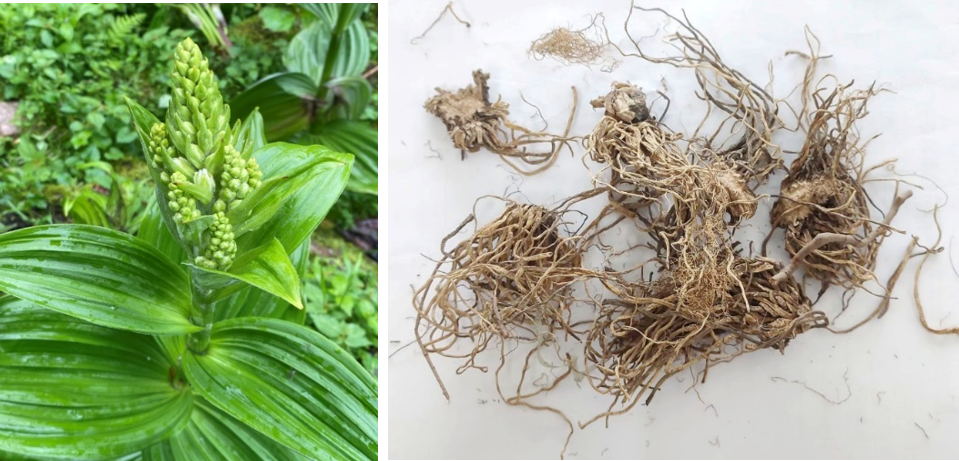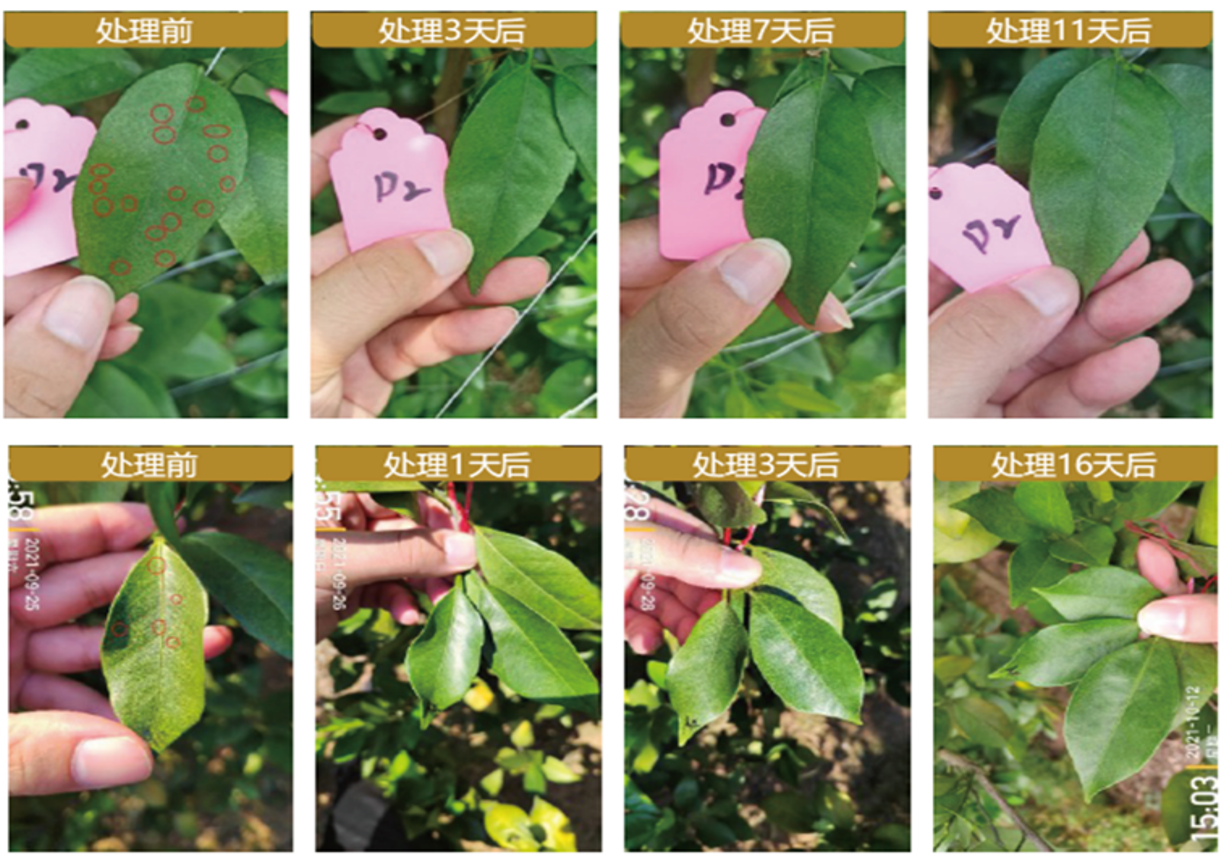Acaricides are a class of pesticides widely used in agriculture, industry and other industries. It is mainly used to control agricultural mites, or ticks on livestock or pets. Every year the world suffers huge losses due to mite pests. According to the Food and Agriculture Organization of the United Nations, 80 percent of the world’s cattle herds are infested by ticks, which cost the world an estimated $7.3 billion a year in economic losses. In South America, soybean plants damaged by the spider mite Mononychellus planki McGregor (Acari: Tetranychidae) lost approximately 18.28% in cereal yield. In China, nearly 40 million acres of citrus are also infested by Panonychus citri (McGregor). Therefore, the global market demand for acaricides is increasing year by year. The top eight products in the acaricide market in 2018 are: spirodiclofen, spiromethicone, diafenthiuron, bifenazate, pyridaben, and propargite , hexythiazox, and fenpyroximate, their total sales are US$572 million, accounting for 69.1% of the acaricide market, and the market size is expected to reach US$2 billion by 2025. The market size of acaricides is likely to be larger as the global arable land decreases, the population increases, the demand for natural products increases, and the demand for sustainable agricultural practices increases.
Analysis of the global acaricide market shows that red spider mite, Panclaw citrus and Panonychus urmi are by far the most economically important species of pest mites, accounting for more than 80% of the market. Other related mites are the pseudo spider mites (mainly the short spider mites), the rust mites and the gall and horsefly mites. Vegetables and fruits, including citrus, grapevines, soybeans, cotton, and corn, are the main crops for which acaricides are applied.
However, due to the short life cycle, parthenogenesis, unique metabolic tools and strong environmental adaptability of herbivorous mites such as spider mites and panclaw mites, their resistance to acaricides has grown rapidly. Mites account for 3 of the 12 resistant arthropods reported. In the global application of acaricides, conventional chemical acaricides such as organophosphates, carbamates, organochlorines, and pyrethroids still occupy a dominant position. In recent years, although high-efficiency acaricides such as bifenazate and acetafenac have come out, the problem of homogenization of acaricides is still serious. With the long-term and unscientific use of these acaricides, most of the herbivorous mites have developed different degrees of resistance to the chemical acaricides on the market, and their effects have declined significantly. On the other hand, with the increasing attention to environmental issues and the gradual increase in the area of organic agriculture, the demand for natural products to protect crops in the global market has increased significantly. Therefore, the development of safe, efficient, environmentally friendly, less harmful to natural enemies and Safe and new biological acaricides that are not easy to develop resistance are imminent.
Based on this, it is an urgent need for industry and industrial development to make full use of China’s biological resources advantages to promote the research and development and application of biological acaricides.
1. Research background of veratrotrol alkaloids

Hellebore, also known as mountain onion, black hellebore, is a perennial medicinal material. As a native insecticidal plant in China, people often dig out its rhizomes during the vegetation period and fry it into a mild decoction to cold wash sheep, goats, cattle and other livestock, and to deal with housefly maggots and other parasites. Then researchers found that hellebore also has a good control effect on other pests. For example, the ethyl acetate extract of Veratrum rhizome has good insecticidal activity on the second and third instar larvae of Plutella xylostella, while the Veratrol alkaloid extract has a certain lethal effect on the adult and fourth instar larvae of German cockroach. At the same time, researchers also found that different extracts of Veratrum rhizome have good acaricidal activity, among which ethanol extract>chloroform extract>n-butanol extract.
However, how to extract the active ingredients is a difficult problem. Chinese researchers usually use ammonia-alkalized chloroform ultrasonic extraction, water extraction, ethanol percolation extraction, and supercritical CO2 extraction to obtain active substances from veratrum rhizomes. Among them, the ammonia alkalized chloroform ultrasonic extraction method uses a large amount of toxic solvent chloroform although the extraction rate is relatively high; the water extraction method has many extraction times, large water consumption, and low extraction rate; rate is low. The supercritical CO2 extraction method to extract veratroline alkaloids not only has a high extraction rate, the active ingredients are not destroyed, but also the medicinal activity and the purity of the active ingredients of the obtained products are greatly improved. In addition, the CO2 non-toxic and solvent-free residue is harmless to the human body and the environment , which can slow down the environmental pollution caused by traditional extraction methods, and has been listed as one of the best extraction and separation technologies for plant medicinal effects. However, the risky production process and high cost hinder its large-scale industrial application.
2. Research and development progress of veratrotrol alkaloids
Study on the extraction technology of Veratrum. The co-extraction technology is mainly based on the traditional Chinese medicinal material veratrorum, supplemented by natural medicinal materials. , Veratrotoin and other multiple active ingredients are prepared together, and at the same time, different solvents are used to continuously extract the botanical medicinal materials, so as to maximize the purification and precipitation of the effective active components in the botanical medicinal materials in stages. Obtaining group components of compounds with different functionality or similar functionality from the same batch of raw materials. Significantly improve the utilization rate of botanical raw materials, reduce production costs, and significantly increase market competitiveness.
Study on the mechanism of action of Veratrum active substances. Veratrol rhizome extract is a kind of mixture, which contains more than ten active ingredients such as veratrol, resveratrol, veratrotoin, cyclopamine, veratrol, and resveratrol oxide. The nervous system of pests.
According to research reports, its toxicity is based on the opening of voltage-dependent Na+ channels, which in turn opens voltage-activated Ca2+ channels, leading to neurotransmitter release. Voltage-gated sodium ion channels are an integral part of neuronal and muscle signaling. The active components in Veratrum extract can cause current disturbances in sodium ion channels, resulting in changes in membrane permeability, causing tremor shock and eventual death.
At the same time, some French scholars reported that veratroline alkaloids can also non-competitively inhibit the acetylcholinesterase (AChE) of insects. Due to the novel mechanism of action of veratrotrol alkaloids, multi-site attack can occur, and it is difficult for mites to adapt to the multi-action site drugs through their own structural changes, so it is not easy to develop drug resistance.

0.1% CE hellebore rhizome extract preparation technology. Supported by advanced extraction technology and supplemented by excellent preparation technology, the surface tension of the drug is small, which can quickly wrap the insect body, promote the penetration and absorption of the drug solution, and enhance the effect of active ingredients. It has good dispersibility in water, and the solution is transparent and homogeneous after dispersion. 1000 times dilution, the time to completely wet the canvas sheet is 44 seconds, and it can quickly wet and penetrate. The multiple light scattering stability data showed that the 0.1% CE veratrum rhizome extract preparation had good stability and fully met various field application environments.
Research progress on application technology of 0.1% CE veratrum rhizome extract
The new technology has greatly improved the quick-acting properties of the drug. Compared with the previous technology, the product has reduced the use of a single ingredient. Through the unique process, the ingredients in the product are more abundant, and the synergistic effect is more obvious.
At the same time, when used together with existing chemical pesticides, firstly, it can significantly reduce the population base of red spider mites, reduce the amount of chemical pesticides and improve the control effect. To sum up, in the high incidence period of citrus Panonychus mite in Hezhou, Guangxi, China, spraying 0.1% CE Veratrum rhizome extract + 30% etoxazole was effective in 20 minutes, no live insects were seen 3 days after the application, and the control effect was 11 days after the application. can be maintained above 95%. In the early stage of Jiangxi Ruijin navel orange citrus panclaw mites, 0.1% CE Veratrum rhizome extract + 30% tetramizine bifenazate all died 1 day after the application, and no live insects were seen 3 days after the application. , the control effect is close to 99% after 16 days.
The above field bioassay results show that when the base number of red spider mites is low or high, single-agent use and compound use with chemical agents, the rhizome extract of Veratella vulgaris can reduce the base number of red spider worms and improve the control effect of chemical pesticides. It showed excellent control effect. At the same time, the rhizome extract of hellebore is derived from plants. At the recommended concentration, it is safe to use in the budding, flowering, and young fruit stages of most plants, and has no effect on the expansion of shoots, flowers and fruits. It is safe and environmentally friendly to non-target organisms such as natural enemies of mites, and has no cross-resistance with existing insecticides and acaricides. It is very suitable for integrated management of mites (IPM). And with the reduction in the use of chemical pesticides, the residues of chemical pesticides such as etoxazole, spirodiclofen, and bifenazate in citrus can fully meet the “China National Food Safety Standard for the Maximum Residue Limits of Pesticides in Foods”, “European Union Foods”. Pesticide Residue Limit Standard and U.S. Pesticide Residue Limit Standard in Foods provide a solid guarantee for food safety and the quality and safety of agricultural products.
Gene editing technology promotes the industrialization of hellebore
Hellebore is a common medicinal material and is a perennial herb of the Liliaceae family. It grows in mountains, forests or bushes. It is distributed in Shanxi, Hebei, Henan, Shandong, Liaoning, Sichuan, Jiangsu and other places in China. It is rich in wild resources. According to the investigation, the annual output of medicinal hellebore is close to 300-500 tons, and the varieties include many varieties, such as hellebore, Xing’an hellebore, maosu hellebore, and Guling hellebore, and the active components of each species are not the same.
With the rapid development of biotechnology and in-depth research on hellebore medicinal materials, the use of gene editing technology to improve medicinal species of hellebore and artificial domestication of wild hellebore species has progressed in stages. Artificial cultivation of hellebore varieties will greatly reduce the damage of hellebore excavation to wild germplasm resources, and further promote the industrialization of hellebore in the agricultural field and the medical field.
In the future, natural hellebore rhizome extracts derived from medicinal plants are expected to gradually reduce the use of traditional chemical acaricides, and make further improvements in improving the quality of agricultural products, improving the quality and safety of agricultural products, improving the agricultural ecological environment and maintaining biodiversity. great contribution.
Post time: Aug-08-2022



